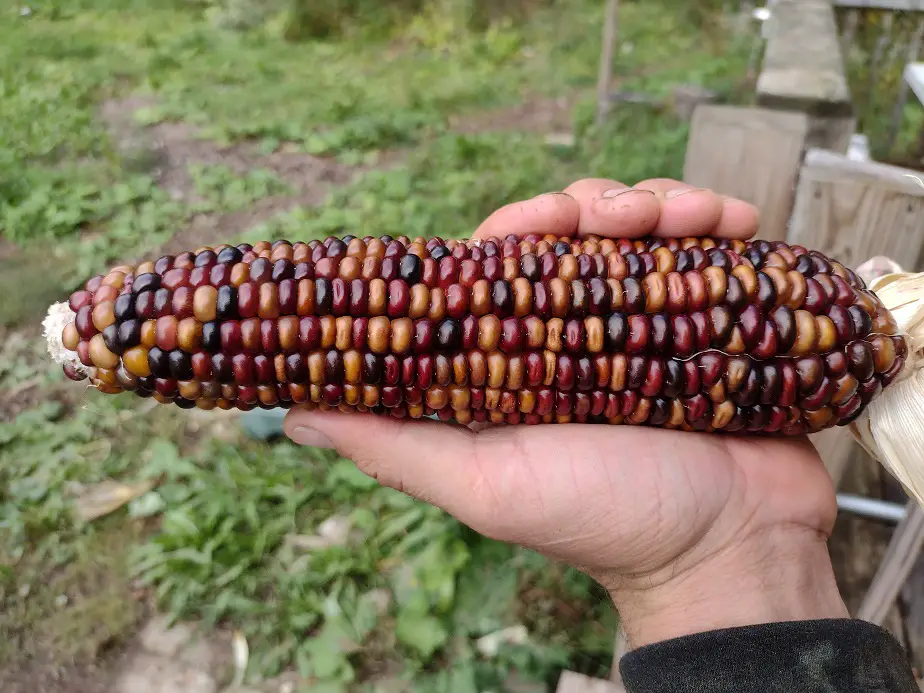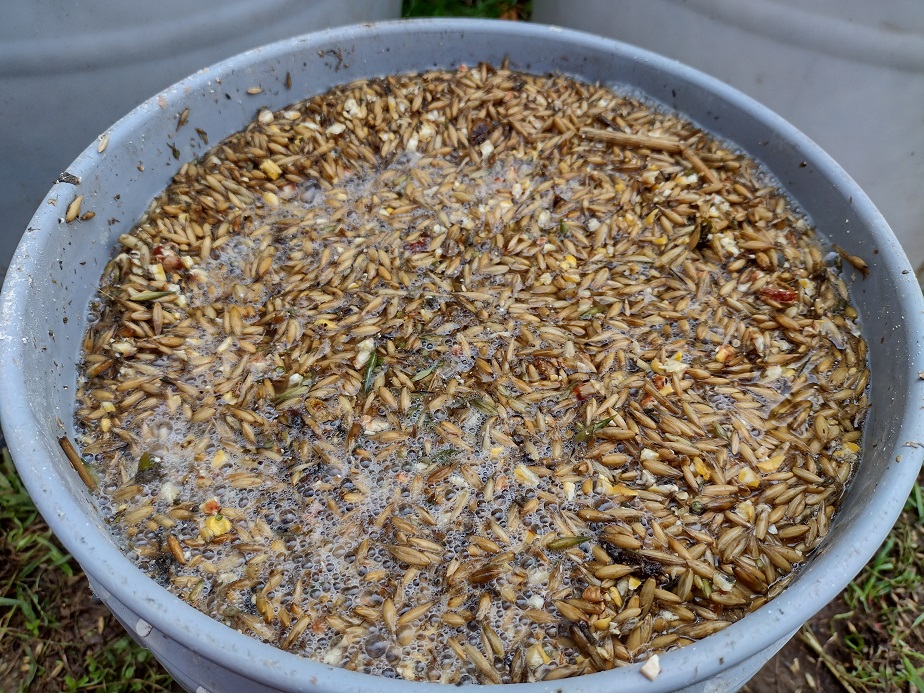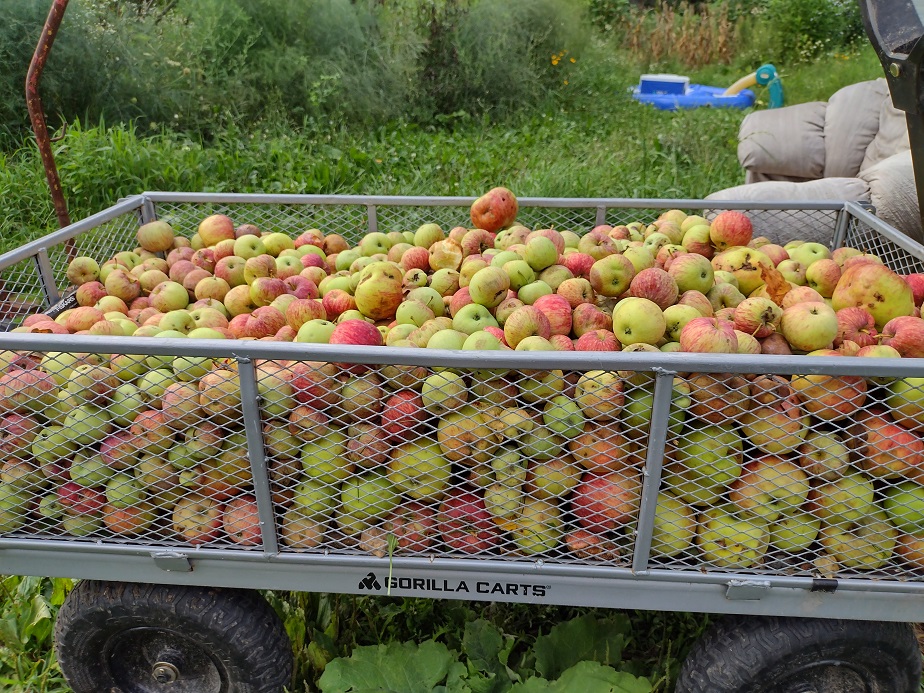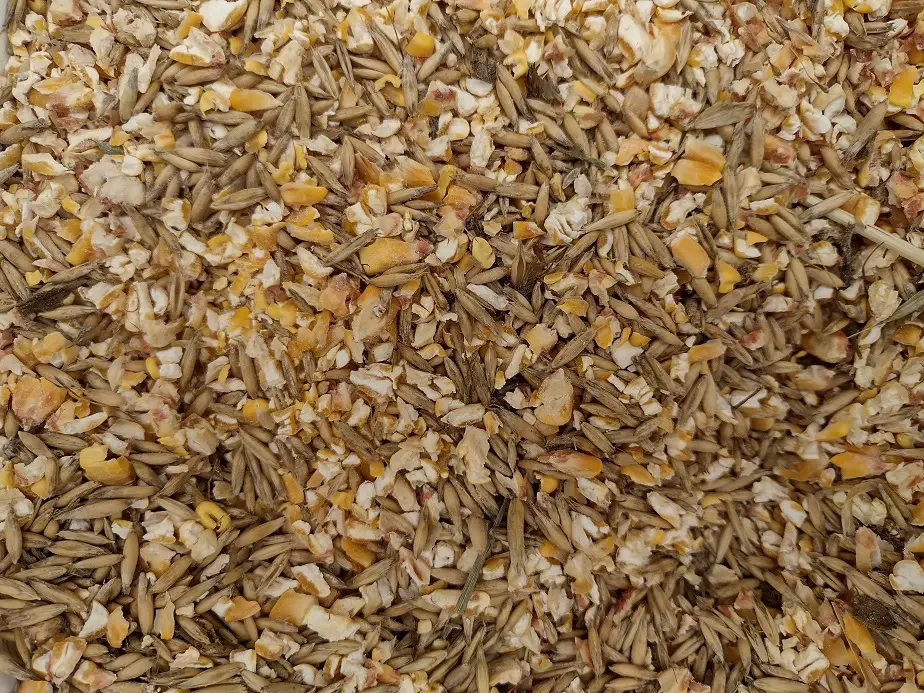I have been fermenting feed for our poultry for longer than I can remember. Here’s what I’ve learned about it
Understanding Fermented Feeds
Fermented feed is a wet feed that has undergone colonization of healthy strains of beneficial anaerobic bacteria and yeasts. It lowers the sugar and starch content, while significantly increasing the protein content. Fermentation increases the digestibility of fiber and may add to the vitamin and fat content.
It may sound weird, but it’s really quite simple. Fermenting feeds is biologically somewhere between making sour milk and making a loaf of sourdough.
In fermenting, there are two main types of beneficial bacteria. They are the acetic acid bacteria and the lactic acid bacteria. Both will get hard to work multiplying and breaking down a combination of simple and complex starches.
If the temperature is adequate, they will colonize to the point that harmful bacteria cannot thrive. It’s a self-balancing system. As the bacteria are at work, they produce acids that lower the pH dramatically to the point where the harmful microbes can no longer even survive. All this usually happens within 2 or 3 days.
As that’s going on, there’s a third class of beneficial microbes at work, the carbonics. These are a combination of bacteria and yeasts that produce carbonic acid (think carbonation) as a waste-product. When you combine all these acids together, the result is generally a pH between 4.3 and 4.
At that point, parts of the feed that had been indigestible have been further broken down, and the fermented feed will resist rotting for a while. Fermenting feed is actually a great way to process whole grains for animal feed. No grinding would be required. That’s how I do it.

The Nutritional Advantages of Fermented Feeds
In general, fermenting feeds lowers the starch by 10-30 percent and increases protein by roughly the same factor. The amino acid with the greatest increase from fermentation is lysine. In a high-starch grain, I can get a 100 percent increase in the lysine content, which is great for poultry.
You’ll generally see a bump up in Vitamin A, and often a bit more fat content with a high-starch grain. My preference of grains for fermentation is corn and oats, but any grain will do.
Fermentation can increase the digestion of whole grains and grain-based feeds by 10 to 15 percent. Another great benefit is the incredible amount of probiotics and beneficial gut bacteria the animals will be ingesting. Even a little fermented feed, as much as 5%, shows remarkable results in health, performance, and enhanced immune-function of chickens.

The Fermentation Process: Step-by-Step Guide
Any chicken feed can be fermented, and all you need to add to it is unchlorinated water. Whole grains tend to ferment better than feed, but any feed will ferment. There is already enough bacteria and yeast on the feed and in the air to begin colonization.
I prefer to ferment feed in 5-gallon buckets that have a lid. If they have a rubber seal, either remove the seal or don’t fully seat the lid because it will need to expel carbonic gas as it ferments.
With grains, I fill the bucket 2/3 with grain then add water to near the top. I want the grains to be completely water-bound like a bowl of cornflakes aught to be. They will swell and soak in a lot of water, and we’ll still need water enough to somewhat float the grains after that.
If you’re fermenting a regular chicken feed, I’ll go closer to half feed- half water. The prepared feed soaks up more liquid. After that, all you do is keep it fairly warm and let it sit for 24 to 72 hours. I check the pH to see if it’s done. You can use a digital pH tester, or those little pool water testing strips.
The pH needs to be below 4.5, and should be at or below 4.3 before it’s properly fermented. At that point, it’s stable for a few days and you can begin feeding it to your birds.
Even a scratch grain mix can be fermented quite well. I know one man in India who collects and ferments old bakery bread and rice hulls as animal feed. It works.

The only real key to fermenting is to keep the temperature applicable. It works best between 70 and 80 degrees F. Higher than 90 and lower than 65 gets quite hard to work with. In warm weather, we do the fermenting outside. In the cold weather, we bring the buckets into the warmer room of the house.
It doesn’t stink at all. Sometimes it smells like rising bread dough, or a sourdough.
For feed recipes including fermented feed, see this article: 10 DIY Recipes for Chicken Feed (plus trace mineral tips)
Related articles:

